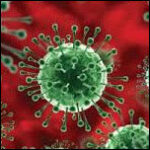The Virginia Department of Health (VDH) and Virginia Hospital and Healthcare Association (VHHA) publish a wide variety of data about COVID-19 infections, hospitalizations and deaths. It is easy to get overwhelmed by all the numbers, yet the data is woefully incomplete. Perhaps the greatest deficiency is that we have no ability to track what is happening with medical conditions that are not COVID-related.
That’s a huge issue because as Tomislav Mihaljevic and Gianrico Garrugia, CEOs of the Cleveland Clinic and the Mayo Clinice, point out in a New York Times column, as many people may die from the fear of COVID-19 as from the virus itself. Writes respectively:
More than 100,000 Americans have died from Covid-19. Beyond those deaths are other casualties of the pandemic — Americans seriously ill with other ailments who avoided care because they feared contracting the coronavirus at hospitals and clinics.
The toll from their deaths may be close to the toll from Covid-19. The trends are clear and concerning. Government orders to shelter in place and health care leaders’ decisions to defer nonessential care successfully prevented the spread of the virus. But these policies — complicated by the loss of employer-provided health insurance as people lost their jobs — have had the unintended effect of delaying care for some of our sickest patients.
The authors report a 45% increase in new cancer diagnoses across the country, a 38% increase in heart attacks, and a 30% increase in strokes. Reports to emergency rooms have declined 40%, but patients who do come are sicker by 20%. Non-COVID deaths have declined inside hospitals but have increased outside of hospitals. “These statistics demonstrate that people with cancer are missing necessary screenings, and those with heart attack or stroke symptoms are staying home during the precious window of time when the damage is reversible.”
Mihaljevic and Garrugia don’t even address the mental health issues that may be exacerbated by job losses and stay-at-home orders.
Here in Virginia, Governor Ralph Northam unnecessarily prolonged the shut-down of elective procedures in Virginia hospitals, but he did belatedly reverse the emergency order. We’ll never know how many unnecessary deaths resulted. But the damage is far from over. Media-driven hysteria — fueled by the particular sets of statistics that state agencies have chosen to report daily — have created an atmosphere in which people continue to make choices that adversely affect their health.
The Governor and the media need to make it clear now that the epidemic is in abeyance that people put themselves at risk by refusing to seek medical treatment. The danger from undiagnosed illnesses could well outweigh the danger of the coronavirus.
To drive home the message, it would be helpful for the VDH and VHHA to report the kinds of data that the Cleveland Clinic and Mayo Clinic CEOs refer to. If those two institutions managed to gather the data, surely Virginia hospitals can as well.
Will we ever see the data? I doubt it. First, there likely would be issues relating to defining exactly which metrics can and should be captured, how much it would cost to collect them, and whether the cost is justified. Then there’s the fact that the Northam administration has zero political motivation to publish the data because it would prompt people to further question the wisdom of the Governor’s emergency decrees. The last thing he would want people to know is that more lives were lost as a result of his diktats than were saved.
In the meantime, it would be helpful if Virginia’s media acknowledged their culpability in feeding the hysteria. I will confess that I contributed in small measure to the panic. Spurred by the coverage of the epidemic in Italy, I initially bought into the forecasts of overwhelmed hospitals and hundreds of thousands of U.S. deaths. I criticized the Northam administration for not acting aggressively or competently enough. I highlighted the number of confirmed cases, hospitalizations, and deaths. But I have always emphasized the unintended consequences of the shutdown, and I did break away from the group think more quickly than most. It’s never too late to do the right thing.



